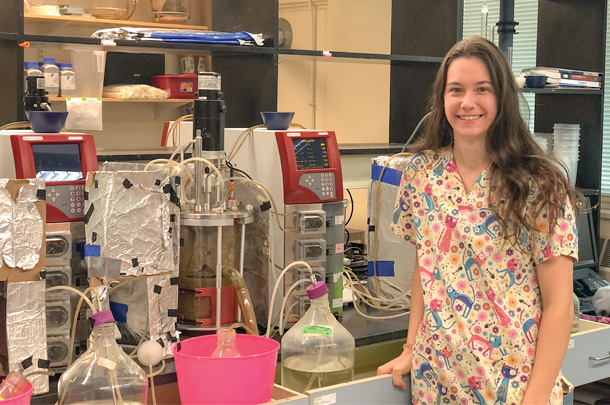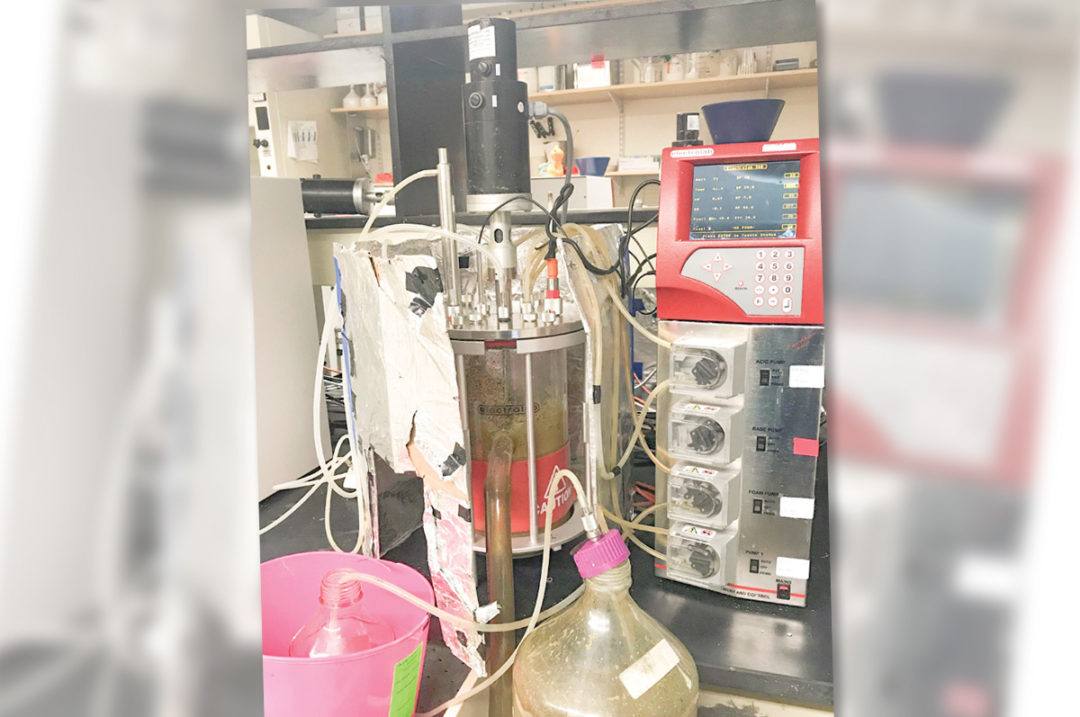Researchers have been looking to the ocean – more specifically, to the group of algae known as “seaweed” – to determine if these macroscopic marine plants, which are filled with nutrients and contain other biologically active compounds, might be beneficial additives to dairy cow diets.
Aside from potentially enhancing cow health, seaweed has another benefit. It has been shown to reduce the methane released by cows – most of which comes from burps and farts, and not manure – during the digestion process. If seaweed can reduce the greenhouse gas emission associated with raising ruminant livestock, plus positively impact cow health, it might be a relatively simple way to decrease the dairy environmental footprint.
That’s why a recent USDA Organic Agriculture Research and Extension Initiative (OREI) grant, awarded to Dr. Sabrina Greenwood of the University of Vermont (UVM), matters. The four-year, $3 million grant will study the impacts of feeding seaweed to organic dairy cows in the northeastern U.S. and include economic and supply chain logistics as well as dairy cow health and production impacts.
“Evaluating the ability of feeding organic seaweed to organically raised cows as a way to reduce methane from the cow is one area of focus, but seaweed can potentially do so much more,” Greenwood says. “We’re looking not only at methane emissions during the summer grazing period and the winter period when cows in the Northeast are housed indoors, but we’re also talking to producers about seaweed feeding practices to gain a better sense of the current benefits and limitations, and we’re looking at animal health, milk quality, nutrient cycling at the farm and soil level, and the supply chain.”
The research is just getting started. The University of New Hampshire, Syracuse University and Bigelow Laboratory for Ocean Sciences are also partners on the grant. The certified organic dairy cows at the UNH farm, in trials led by Dr. Andre Brito, will be fed with the organic seaweed being studied, as will the cows at two commercial certified organic dairy farms. Supply chain issues will be addressed too.
“My role is to explore opportunities to create more resilient dairy feed supply chains and a more prosperous agricultural economy through incorporation of seaweed. My vision is that it helps diversify the markets of existing feed and input suppliers and/or creates space for new entries,” David Conners, applied economist at UVM, says.
In vitro research
But before the research reaches any real cows, the impacts of the seaweed are studied in the laboratory. This in vitro research will help determine which seaweeds will be used in in vivo studies.
The in vitro experiments will simulate several common organic dairy cow diets, including a typical summer grazing diet as well as a winter forage diet, and attempt to quantify what various seaweeds will do in the rumen environment. The exact diet formulations haven’t yet been decided.
“The in vitro work is an important first step because many seaweeds are still not fully characterized, meaning we don’t know everything about how they act in the body when eaten,” Greenwood says. “Performing in vitro experiments prior to in vivo trials is also a great way to test a lot of different seaweed options on a small scale, accumulate data and likely impact of the different options, and then pick the best options to use in feeding trials.”
Seaweed’s nutritional makeup is very diverse. Some varieties offer high sugar content, while others are high in fiber. Many seaweeds are laden with minerals, and most seem to have moderate crude protein (CP) levels. Similarly, the bioactive profile of seaweed can vary widely.
“Some of these profiles may support milk production, and some may not. Some of them may have nutrient profiles, such as iodine, that need more thoughtful integration into the diet,” Greenwood says. “It’s harder to know how the seaweed may impact cow production and health because of the secondary metabolic profile.”
The key part of the in vitro work involves the use of a simulated cow digestive system, known as in vitro continuous culture fermenters. The fermenters work by utilizing rumen fluid collected from a fistulated cow. Keeping jars of these rumen fluids at the same temperature as found in a cow’s rumen, simulating the muscle contractions and mixing which occur in the rumen via stirring and pumping in a buffer fluid to mimic saliva allow researchers to create a functional synthetic rumen.
The fermenters are further equipped with tubes to allow rumen fluid to slowly exit the jars, recreating the action of the digestive tract. Fermenters are “fed” two to four times per day, and the jars are closely monitored to collect data on just what is occurring when various types and amounts of seaweed are included in the base diets. For the OREI research, all of the fed ingredients are certified organic.
“The in vitro research will directly inform which seaweed options are selected for the in vivo trials,” Greenwood says. “We are taking care to ensure the seaweed options we are focused on can be grown and processed as organic-certified and these options are viable for the northeastern U.S.”

Ashley Driemel, pictured, is currently working with five fermenters, studying the impact of seaweed in cow diets. Photos provided by Ashley Driemel, M.S. student, Department of Animal and Veterinary Science, UVM.
Other seaweed research at UVM
The OREI-funded project isn’t the only one looking at the digestibility of seaweed in the rumen. Ashley Driemel, a master’s student working in Greenwood’s laboratory, is studying seaweed in the simulated rumen fermenters for another project, led by the Bigelow Laboratory for Ocean Sciences, which is not specific to organic dairy cows.
“The overall goal of my current project is to see how different seaweeds affect the simulated rumen environment and if the specific seaweed species we’re testing would be suitable feed additives for real cows on farms,” Driemel says. “We’re focused on analyzing different health parameters, such as the production of volatile fatty acids (VFAs), as well as looking into how important protein pathways may be affected by these seaweeds.”
Driemel notes that differences abound in nutritive content between seaweed species, just as with pasture forages or fed rations. So far, she hasn’t come across any counter-indicators to using seaweed as a feed additive, but the cows might not agree.
“A major concern of using seaweed is palatability,” Driemel says. “Another major concern pertains to nutritive aspects of the seaweed, such as mineral contents, and whether or not that will affect byproducts like milk and meat.”
Methane reduction
Studies have shown that methane production in forage-based cow diets is higher than in grain-fed cows, and that seaweed added to the ruminant diet can reduce these digestion-related methane emissions. If seaweed can impact methane production in the cow’s digestive system, it may also influence manure and urine.
“Part of our research focus is to see how feeding seaweed impacts cow health and nutrient cycling, and how this manure and urine being spread on the field as fertilizer, or being excreted on the field by the cow, is impacting soil health” Greenwood says.
Organic dairy producers in the Northeast can expect to directly benefit from the results of the four-year OREI study.
“By the end of this study, our aim is to show producers what inclusion of seaweed will do on-farm at all these levels in a very real-life and applied kind of way,” Greenwood says. “Partnering with certified organic dairy farms in the Northeast will provide a lot of opportunities to showcase how organic seaweed can be included in organic dairy diets in an effective way.”




